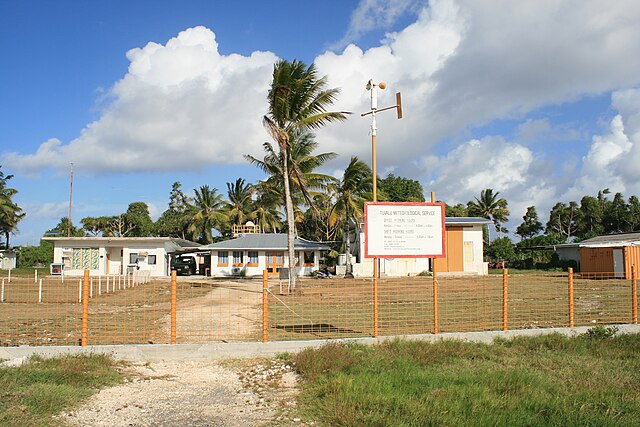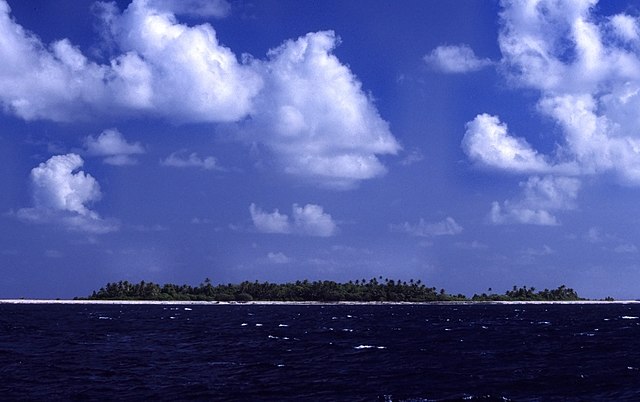The 2011 Tuvalu drought was a period of severe drought afflicting Tuvalu, a South Pacific island country of approximately 10,500 people, in the latter half of 2011. A state of emergency was declared on September 28, 2011; with rationing of available fresh-water.
The La Niña event that caused the drought ended in April–May 2012. By August 2012 the El Niño-Southern Oscillation (ENSO) Conditions indicated that the tropical Pacific Ocean was on the brink of an El Niño event.
Tuvalu Meteorological Service, Fongafale, Funafuti atoll
A public water collection point set up on Funafuti in response to the drought, Tuvalu, 2011 (Credit: DFAT)
Climate change is particularly threatening for the long-term habitability of the island country of Tuvalu, which has a land area of only 26 square kilometres (10 sq mi) and an average elevation of less than 2 metres (6.6 ft) above sea level, with the highest point of Niulakita being about 4.6 metres (15 ft) above sea level. Potential threats to the country due to climate change include rising sea levels, increasingly severe tropical cyclones, high temperatures, and drought. King tides can combine with storm surges and the rising sea level to inundate the low lying atolls.
The Funafuti atoll of Tuvalu
Sea surface temperature anomalies in November 2007 showing La Niña conditions. Blue=temperature below average; red=temperature above average
Ocean side of Funafuti atoll showing the storm dunes, the highest point on the atoll.
Tuvalu Meteorological Service, Fongafale, Funafuti atoll





